MidTown Marinas, Bundaberg
The Town that Wasn’t and the Hounds who
Wouldn’t
By Lois Joy
![]()
Stories in this section... Australia Voyage 4
Back to Bundy and Bliss
Barnacle Bliss
The Town that Wasn't
Messing with Boats, Part V
The Town that Wasn’t and the Hounds who
Wouldn’t
By Lois Joy
![]()
It was a lazy, laid-back week-end in the town of Bundaberg. Our diesel shop had given us free entry tickets to the greyhound races for Saturday. On a drizzly Sunday, we decided to take a drive to the Town of Seventeen Seventy, 120 kilometers north of here.
We had planned to take a longer excursion south to Montville to picnic in the mountains and then see Crocodile Steve perform at the Australian Zoo. I owed it to my grandchildren, Brett and Cody, to send back photos of Steve Irwin wrestling crocs—just like on TV. But the weather wasn’t cooperating, with rain in the forecast. Then on Saturday morning, Gunter discovered that our Spectra watermaker had a cracked end-cap. So the morning was spent perusing the Spectra website and e-mailing local distributors for a new part. Our progress on preparing Pacific Bliss for the sailing season is “two steps forward, one step back” as usual (see Gunter’s Messing with Boats, Part V).
But by noon, we had done as much as we could, so we fixed lunch on board,
then headed for the racetrack. It is a multi-purpose track, with a narrow
oval for racing greyhounds situated in the center of the wider oval for horseracing.
It quickly became apparent that the crowd lacked the sophistication of the
famous Del Mar in California (there was a paucity of ladies strutting in high
heels and showy wide-brimmed hats) but for Gunter and me it provided a great
touch of local color. Family groups were predominant. The men dressed in boots
and jeans and cowboy hats, or sport shoes and slacks and shirts with rolled
up sleeves; the women wore casual slacks and tops, largely ignoring their
children who were merrily bouncing alongside the grandstands in an inflatable
playhouse.
The noise was deafening. We could barely hear the announcer calling out for
the handlers to take the next group of hounds to be muzzle-checked, then taken
to the tracks. We soon discovered, though, that the hound races on the track
were far from the focus of attention. The kids screamed their delight as they
jumped; the progress of umpteen horse and hound races barked from the monitors
lined up over the ticket booths; a woman announced over the din: “Only
two more raffle tickets, buy them now!” She approached us with a large
tray of raw beef and pork: “Only two dollars to enter and win this prize.”
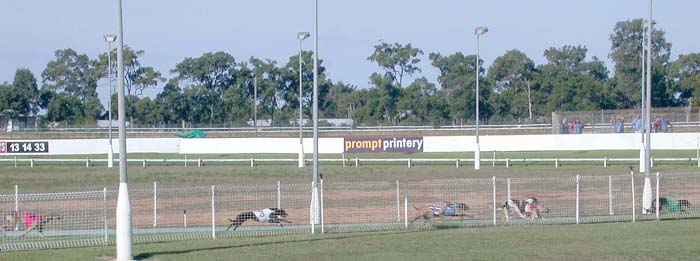
I bellied up to the bar on the second floor of the stands, mostly because I wanted to check out the atmosphere there. “Two Fourex beers, please.” Every state in Australia loves to support its local beer; XXXX is the only brand to order here in Queensland. There was a group of round plastic tables and chairs in front of the bar that looked out to the track. No one was watching. A snack bar at the end of the bar sold chips (french fries), hot dogs and assorted ‘pops.’
Gunter and I pulled up a couple of plastic chairs to a round table on the
first floor as we sipped our beers and tried to get a handle on the action.
The owners brought their dogs to the ‘handlers,’ who pretty much
handled everything, wearing bright vests matching their dog’s number.
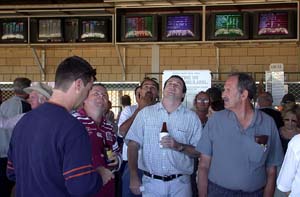 A
mechanical rabbit ran around the track as the dogs tugged at their leashes,
panting in anticipation. We watched a few races. Then all of a sudden, pandemonium
burst onto the track. Some of the dogs began to run back the other way! Soon
others followed, and then the entire pack was back, devouring something! We
had a front-row seat but no binoculars. What was going on? “The bunny!”
Gunter stood up and pointed. “They’re tearing apart the bunny.”
The handlers rushed onto the track to rein in their hounds, but the damage
had been done. Somehow the bunny had stopped and now it was in dire straits.
The race was called off. One race official retrieved the tail from halfway
down the track and walked back to the bunny where other officials were trying
to repair it. It took a long time. Viewers returned to whatever they were
doing before all the excitement, which was mostly betting on other races going
on around Australia.
A
mechanical rabbit ran around the track as the dogs tugged at their leashes,
panting in anticipation. We watched a few races. Then all of a sudden, pandemonium
burst onto the track. Some of the dogs began to run back the other way! Soon
others followed, and then the entire pack was back, devouring something! We
had a front-row seat but no binoculars. What was going on? “The bunny!”
Gunter stood up and pointed. “They’re tearing apart the bunny.”
The handlers rushed onto the track to rein in their hounds, but the damage
had been done. Somehow the bunny had stopped and now it was in dire straits.
The race was called off. One race official retrieved the tail from halfway
down the track and walked back to the bunny where other officials were trying
to repair it. It took a long time. Viewers returned to whatever they were
doing before all the excitement, which was mostly betting on other races going
on around Australia.
Neal, our diesel mechanic passed by. “Come over to the VIP tent,” he motioned to the canopy erected over the grass alongside the stands. “Help yourself to beer or wine and goodies.” We followed him over and sampled a few crackers topped with cheese spread.
Gunter had seen a greyhound whimpering in Neal’s office, recovering from surgery. “Neal, how many greyhounds do you have?” he asked.
“About 40.”
“Wow! That’s a lot. Do you make a lot of money racing them?” I asked.
“No. The money is in the breeding. But I have workers in charge of the farm, doing that.”
“Do you have any hounds in the race today?” asked Gunter.
“Four of them,” Neal answered nonchalantly, paying more attention to his guests than the races.
When we left the grounds, the bunny still hadn’t been repaired. No one seemed to mind that the hounds wouldn’t race.
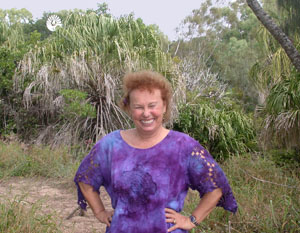 After gleaning a little more out of the week-end Australian, which comes out
on Saturdays, we decided to head out on a little road tour to the historic
town of Seventeen Seventy.
After gleaning a little more out of the week-end Australian, which comes out
on Saturdays, we decided to head out on a little road tour to the historic
town of Seventeen Seventy.
“I’ve looked forward to seeing this town,” I said. “After all, it is named for my hero, Captain Cook. Back in 1970, they named the town 1770, in honor of his landing on Bustard Beach.” I finished washing our breakfast dishes and propped them in the galley to dry by themselves.
“In fact, his landing occured on May 24th, so we’re going there at the same time of the year he landed. I expect to find a lot of interesting things there. We can explore, then eat lunch in some quaint restaurant on main street.”
“What does the Queensland Lonely Planet say?” asked Gunter.
I had marked the section. “It says that today the coastal towns of Agnes and Town of 1770 are—and I quote—‘among the state’s less commercialized seaside destinations, but the world is awakening to their charms. Development is booming in Agnes Water, with shopping complexes and housing estates sprouting seemingly around every corner. Despite that, it’s managing to retain its small-town allure, and its pretty surf beach is a drawing card. Things are less hectic in the beautiful and tranquil Town of 1770 where the surrounding Sir Joseph Banks Conservation Park keeps development at bay.’ ”
“OK, let’s go,” proclaimed Gunter, setting the newspaper aside. “I’ve had my fill of Iraq stuff, anyway. You know, I’m glad now that we decided not to have a TV on the boat.”
“A certain amount of escapism is just fine,” I answered, grabbing our jackets-in-a-bag. “Looks like it could rain along the way.”
Halfway to our destination, we tired of the gloomy skies and yearned for a cappaccino break. Gunter spotted a spoon-and-fork sign designating services in the village of Rosedale and turned off. We passed a little Anglican church, the service times blackened out, deserted on a Sunday morning. We drove around the bend on the narrow blacktop main street to no avail. There were no coffee shops; in fact, there were no restaurants. We stopped at a little convenience store, the only sign of life we found. “The only coffee we have is the bottled kind, in the fridge over there with the pops,” said the stocky, thirty-something clerk, shaking her head. I’m afraid you’ll have to go to Bundaberg to find coffee.”
“We just came from there.”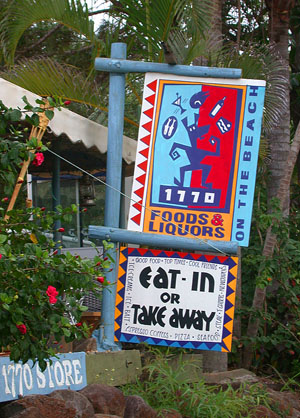
“Well, Agnes Water then.”
We drove into Agnes Water, four miles short of our destination of 1770. The two-lane blacktop road wound around through the town towards the seashore, passing a shopping center with an IGA supermarket, a gas station, and a surf shop, and a restaurant with a sign saying that it would open in the evening.
“Let’s head toward the beach,” I said. “If we can’t find coffee, at least we can see the Pacific.” Whereever we are, we seem drawn to the water.
“Beach Café,” there it is! We parked in the swimming beach parking lot and walked along the white sand surfing beach, then headed for the café. “We’ll just have our cappaccino here and then find a quaint café in 1770 for lunch,” I added.
My cappaccino was excellent. Gunter had ordered a ‘short black with milk on the side’ which had worked for him in Bundaberg. Here, though, he got an espresso with a little jar of milk. He was still trying to understand the system. He called over the waitress for an explanation.
“Oh, that’d be a long black,” she said, friendly and aiming to please. “Do you want me to change it for you?”
“No, now I know for the next time,” Gunter answered.
Thoroughly caffienated, we explored the beach at a more leisurely pace. Just 120 km from Bundy, the air seemed more tropical already, but seeing the kids launching their surf and boogie boards into the slight surf made us chilly. We dutifully read the signs telling us about which poisonous fish to watch out for, then headed back to our rental car to head for the main street of 1770 for lunch.
We passed numerous beachside apartments and condos along the way, with no facilities whatsoever.
“Sort of bland here,” I commented.
“But that’s where many of the pensioners from Brisbane and Sydney are migrating to, Gunter replied. “Perhaps the coffee shops and stores will come later.”
“Perhaps,” I said. But right now, there are only sand dunes for company, yet I can see from the signs that the smallest units are selling in the $250,000 range.”
The narrow blacktop road wound around until we passed a sign saying we were in 1770; it proceeded up steep hills and down canyons sprinkled with B&Bs; then it proceeded down toward the fishing dock and marina, and back up a round hill. Yep, the sign said ‘Round Hill’ and we were now entering a park.
“And there’s Captain Cook’s anchor!” said Gunter, pointing to an anchor at the top of a hill at the end of a winding footpath. We spotted a catamaran sailing far below the cliffs. That did it. We forgot about lunch for awhile as we raced along a footpath, keeping the Cat in sight. The trees near the cliffs were bent, but not broken, bowing from the blowing of the wind. At the pinnacle, we could see a vast bay stretching out below. It could hold a fleet of ships. I was lost in my reverie about who’d been here long before on these very shores.
“We need to find a lunch place before its too late to be served,” Gunter interrupted.
We drove back through everything we’d seen before, until the sign pointed toward Agnes Water.
“Do you think it’s possible there is no town center?” asked Gunter.
“Looks that way. But why would they call it a town then?”
“We’d better stop at the only place we saw to get food. You know, the one across from the fishing ramp.”
“Where it warned us about the poisonous stonefish.”
“That one. Maybe they are serving another kind of fish.”
We found a table on the balcony and walked to the rustic counter to place our order: the omnipresent fish & chips for Gunter and a cup full of banana prawns for me. A one-man band started to set up his speakers as week-end fishermen and holiday families began to fill up the place. The young musician donned his cowboy hat belted out the old country western songs we all know, while strumming on his guitar. It was the liveliest place in town. It was the only place in town. Except that there really wasn’t a town.
The historic “Town of Seventeen Seventy” that the Lonely Planet and the travel literature praised is a grouping of motels and B&Bs. You can buy bait there. But the nearest grocery is in Agnes. In fact, the nearest gas station is in Agnes.
There is Round Hill though, the one with the view and the anchor. I wanted to learn more about what Captain Cook had found when he stopped in 234 years ago:
So let us join Lieut. James Cook, in charge of His Majesty’s ship,
‘Endeavour,’ as he approached the Queensland coast somewhere near
Baffle Creek:
Tuesday 22 May 1770 (from his Voyage Around the World, first published in
1773, parenthesis mine)
“We continued the same course, at the same distance, with from twelve
fathom to seven, till five in the evening, till we were abreast of the south
point (Round Hill Head) of a large open bay, in which I intended to anchor.
During this course, I discovered with our glasses that the land was covered
in palm nut trees, which we had not seen from the time of our leaving the
islands within the Tropick; we also saw two men walking along the shore, who
did not condescend to take the least notice of us. In the evening, having
hauled close upon a wind and made two or three trips (tacks) we anchored about
eight o’clock in five fathom, with a fine sandy bottom.” I could
imagine the Endeavor dropping anchor in that bay, dusk having already fallen
in the shorter days heralding winter, the night chill in the air, as it is
here now.
Wednesday 23
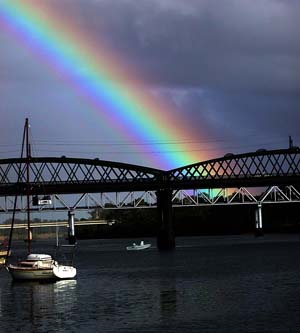
“Early next morning I went ashore, with a party of men, in order to
examine the country, accompanied by Mr. Banks, Dr. Solander, the other gentleman,
and Tupia. (Tupia was the native who Cook had picked up in what is now called
French Polynesia.) The wind blew fresh, and we found it so cold, that being
at some distance from the shore, we took our cloaks as necessary equipment
for the voyage…We found several bogs, and swamps of salt water, upon
which, and by the sides of the lagooon, grows the true mangrove, such as is
found in the West Indies.” (The Burnett River, where Pacific Bliss is
docked, is lined with such mangroves. At dusk, or in overcast weather, these
mangrove swamps release hordes of sand flies, an unpleasant bane of our existence
here.)
“The country here is manifestly worse than Botany Bay (the site of Cook’s
first landing in Australia): the soil is dry and sandy, but the sides of the
hills are covered with trees, which grow separately, without underwood…Upon
the shore we saw a species of bustard, one of which we shot, it was large
as a turkey, and weighed seventeen pounds and a half. We all agreed that it
was the best we had eaten since we left England; in honour of it we called
this inlet BUSTARD BAY. It lies in latitude 24°4’, longitude 208°18’
(151° 42E).”
Cook goes on to describe how the people left on board the ship saw a group
of 20 or so Aboriginis who came down on the beach to look, then disappeared.
He reports: “The place seemed to be much trodden, and as we saw no house,
nor any remains of a house, we were inclined to believe that as these people
had no clothes, they had no dwelling; but spent their nights, among the other
commoners of Nature, in the open air: and Tupia himself, with an air of superiority
and compassion, shook his head, and said that they were ‘Taata Enos’,
‘poor wretches.’ ”
Thursday 24
“At four o’clock in the morning we weighed, and with a gentle
breeze at south made sail out of the bay.”
Cheers to Captain Cook!
As the Pacific Bliss navigator, I am busy checking our paper charts, our
electronic charts, and our guidebooks for our voyage north. We recently purchased
Noel Patrick’s Curtis Coast; we have Alan Lucas’ Cruising the
Coral Coast already on board. I am excited about sailing north from Bundaberg
to the Great Barrier Reef and yet filled with the usual apprehension. I know
that with the numerous islands, shoals, and reefs—and the terrific tidal
flows here—constant alertness will be required. Yet our ship has all
the modern aids to navigation. The abilities of my hero, Captain Cook, as
a seaman and navigator, leave me speechless. Reading his journal entries,
I realize that the Endeavor charted this large eastern coastline of Australia
in a relatively short time. Think about it: he accomplished his mission in
a vessel barely capable of six knots, unable to go to windward, which had
to use its anchor as an ultimate control. The Endeavor carried no chronometer.
Longitude positions were obtained by lunar sights, expressed in degrees west
of London. Our guidebook states that Cook’s description of Round Hill
is so accurate that it is comparable to today’s A5 Map.
|
|
 |
 |
 |
|
|||||||||
|
|
|
||||||||||||
|
|
|
||||||||||||
|
|
|
||||||||||||
|
|
|
|
|
|
|
|
|
|
|||||
|
|
|
||||||||||||
|
|
|
||||||||||||
 |
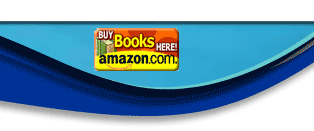 |
|
|||||||||||
|
|
|
||||||||||||
|
|
|
||||||||||||
|
|
|
||||||||||||
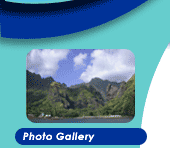 |
|
||||||||||||
|
|
|
||||||||||||
|
|
 |
|
|||||||||||
 |
|
||||||||||||
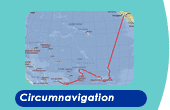 |
|
||||||||||||
 |
|
||||||||||||
 |
|
||||||||||||
 |
|
||||||||||||
|
|
|
|
|
|
|
|
|
|
|
|
|
|
|